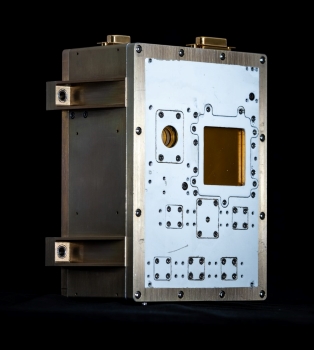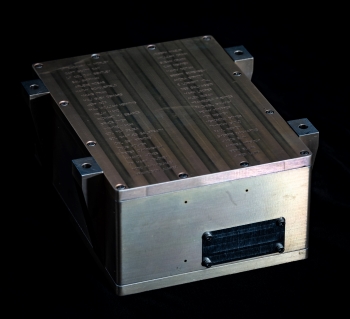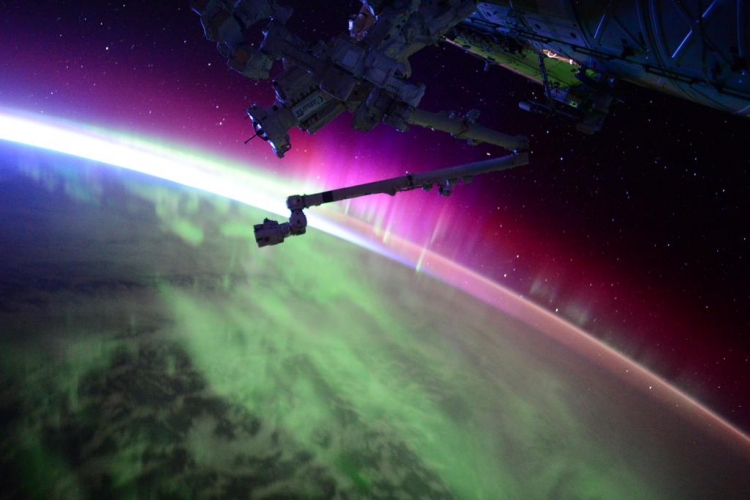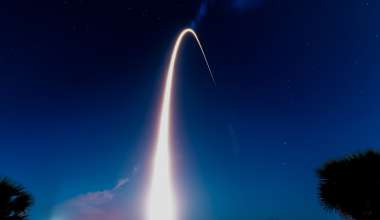
Spacecraft in orbit are subject to space weather and at risk of developing problems from exposure—ranging from surface and electronics degradation to temporary or permanent failure, events that could compromise capability and overall performance. While general interactions between space weather and spacecraft are understood, identifying the exact impact on hardware and operations can take days.
Scientists and engineers at The Aerospace Corporation, led and sponsored by the Space Systems Command’s (SSC) Development Corps Innovation and Prototyping Directorate (DCI) and Air Force Research Laboratories (AFRL), intend to reduce the time it takes to identify a potential space weather-anomaly for satellites in any orbit. The Energetic Charged Particle (ECP)-Lite is a package of sub-sensors that can monitor major space weather hazards and launched on Dec. 7.
“Trying to understand what’s happening to the satellite itself, ruling in or out problems, is becoming more and more important,” said Dr. Joseph Mazur, Principal Director in Aerospace’s Physical Sciences Laboratories. “ECP-Lite is a low-cost, easily integrable sensor that you can put on a satellite to eliminate the uncertainty.”
Weathering the Space Environment
Auroras, such as the northern lights, are a visible example of space weather: the conditions of space near Earth caused by activity on the sun’s surface and in interplanetary space. Maintaining awareness of space weather is important as it can hinder technology—causing anomalies on a satellite, impacting radio signals, or even affecting navigation systems—and disrupt human activities.
For these reasons, the U.S. Air Force and U.S. Space Force require ECP sensors to be integrated on its satellites to provide better attribution of environmentally caused anomalies.
“Proliferating affordable sensors, such as ECP-Lite, and aggregating the data will provide information to decrease fog in the space environment. We must leverage this information to attribute hostile acts, inform domain awareness, and support satellite development,” said Capt. Zachary Morley, Program Manager for Integrated Command and Control for SSC. “I was extremely fortunate to have a passionate and brilliant team developing the ECP-Lite class of sensors. It is amazing to see the sensors launch, but it is no surprise – the team has always moved with world-class agility, foresight, and passion.”
ECP-Lite is a small suite of eight sub-sensors that can monitor space weather’s influence on its host’s electronics and materials. The device can monitor four major hazards, including single event effects, surface dose, and internal and surface charging. This innovative technology taps into Aerospace’s previous internal research and development efforts in creating miniaturized sensors.

Besides being small in size, ECP-Lite is low in its cost, weight, power, and integration on the host. With these qualities, ECP-Lite can be integrated on a satellite with minimal risk.
The instrument is particularly relevant as national defense agencies increasingly recognize the consequences space weather can have on vital systems, requiring their future satellites to have space weather monitoring capabilities.
“It’s like insurance. You may not need it for five or 10 years, but when you get into an accident, you’re happy you have coverage,” said Peter Cunningham, Systems Director in Aerospace’s Developmental Prototypes & Projects. “That’s exactly what ECP-Lite is. If you have an anomaly on your satellite, you need to understand the space weather environment.”
Accelerating Speed of Awareness for Resiliency
ECP-Lite’s host will convey data back to ground-based facilities where the information can be processed. When an anomaly does arise, instead of a time-consuming effort that spans days to identify the impact, satellite operators will be able to figure out the root cause of the problem within minutes. This reduction in time enables mission personnel to perform recovery, protection and other responses quickly.
A key part in shortening the knowledge gap and reaction time is ensuring satellite operators can readily interpret the data that is being transmitted to the ground, an effort that an Aerospace team is actively focusing on.

“The sensor is part of a bigger story where data is power,” said Mazur. “Aerospace excels at translating technical knowledge of radiation levels into what a satellite operator needs to know. If a problem occurs and they check the ECP-Lite data, they should be able to get an answer immediately at machine speed.”
Benefits of collecting data and building further comprehension of space weather’s impacts extend beyond the immediate ECP-Lite host. Increasing awareness can help inform industry on the types of satellite infrastructure needed for future missions.
“When you build a satellite, you build it to a certain level of space radiation hardness,” said Douglas Holker, Principal Director in the Developmental Prototypes & Projects. “If you can understand the environment a satellite has to go through, you can change that amount of hardness. That changes the weight and the costs. ECP-Lite can help the future design of satellites and systems.”
Driving Innovation Through Collaboration
ECP-Lite launched on Dec. 7 as part of the Long Duration Propulsive ESPA (LDPE)-1 aft payload on the STP-3 mission via a United Launch Alliance Atlas V rocket from Cape Canaveral Space Force Station (CCSFS) in Florida.
A unique part of the payload is a plank inscribed with 46 names, including individuals from Aerospace, as a tribute to their support of the project. The piece is a testament to the scope of collaboration across different teams and locations that enabled ECP-Lite to launch.

“Our Aerospace backplane reaches far and wide—all the way from concept in the labs, down to the execution on enterprise ground solutions,” said Amanda Jones, Associate Systems Director in Aerospace’s Developmental Prototypes & Projects subdivision. “ECP-Lite is a great example of using that backplane. I’ve met and interacted with many people across the corporation working on this project. Aerospace’s backplane has been critical for the success of ECP-Lite.”
ECP-Lite is already influencing future cutting-edge technology. Aerospace’s Catcher, an in-development prototype sensor heavily based on ECP-Lite’s design, will provide local space domain awareness insights.
“It takes a lot of experts in different fields to put together an instrument like this—to design it, test it, and make it work,” said William Crain, Principal Scientist and Engineer in xLab. “Aerospace is unique because it has a matrix of people that are experts in any area you can think of. Aerospace really excels in finding and filling the gap because of how efficient we are working together across the enterprise and across organizations to innovate.”







